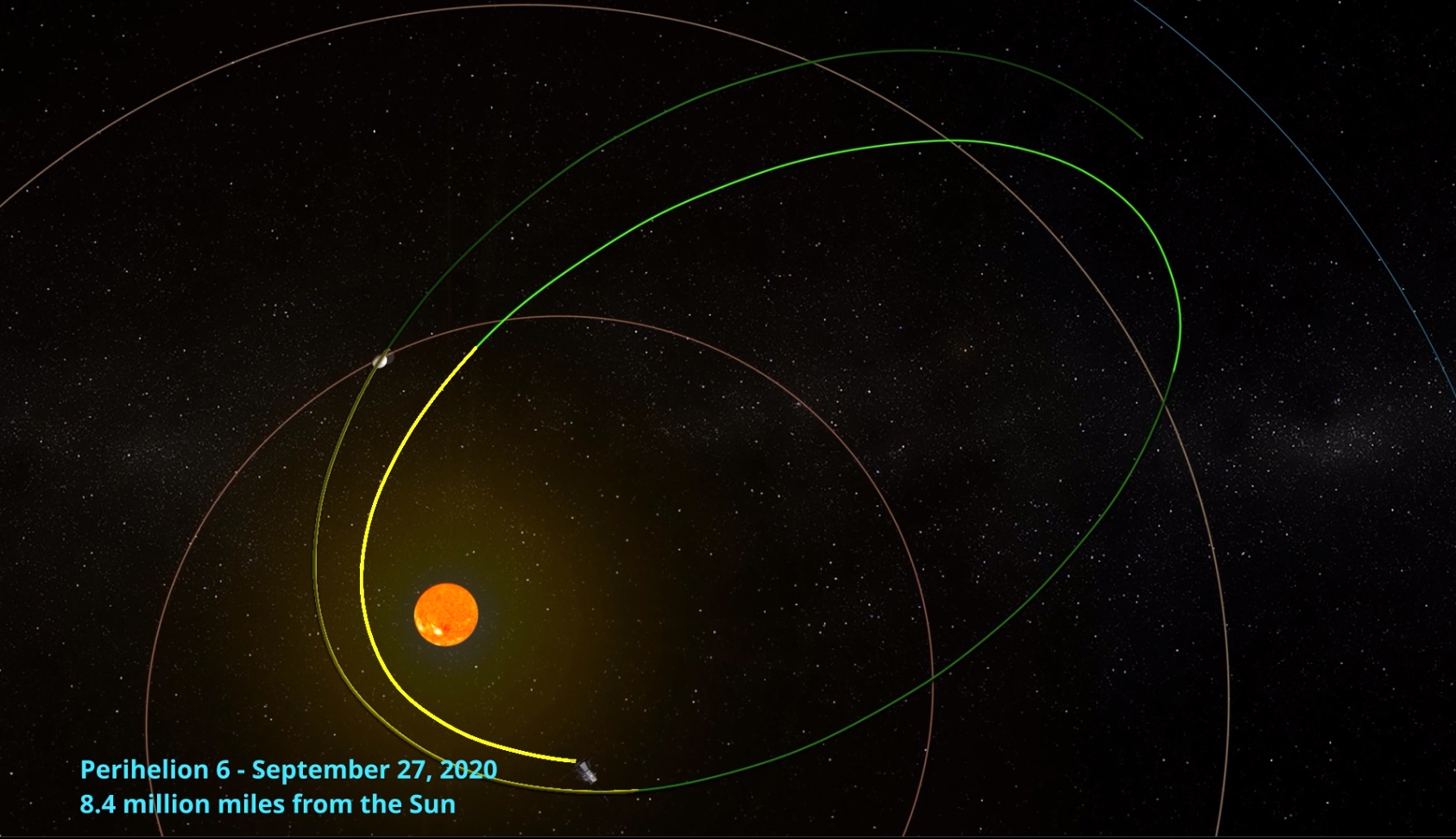Parker Solar Probe ‘Phones Home’ After Sixth Sun Flyby
Posted on 2020-09-30 14:10:19Zooming away from the Sun, NASA’s Parker Solar Probe checked in with its operators on Earth early on Sept. 30, 2020, letting them know it’s healthy and operating normally after another record-setting close approach to our star on Sept. 27.
Flight controllers at the Johns Hopkins Applied Physics Laboratory in Laurel, Maryland, received a “Status A” signal from the spacecraft through NASA’s Deep Space Network at 4:45 a.m. EDT; Status A is the best of four possible status signals, and indicates that the spacecraft is operating nominally.
The beacon comes after a six-day stretch when communications with the spacecraft were not possible as it wheeled around the Sun. This is the first sign of a successful solar encounter; this sixth solar encounter began Sept. 21 and continues through Oct. 2.
At closest approach (called perihelion) on Sept. 27, Parker Solar Probe came within about 8.4 million miles (13.5 million kilometers) of the Sun’s surface — less than one-tenth of the distance between Earth and the Sun — while reaching a top speed of 289,927 miles per hour (466,592 kilometers per hour), breaking its own records for speed and solar distance.
The team will begin downlinking data from this solar encounter on Oct. 3, giving it more information about the spacecraft’s condition and performance of the science instruments during the flyby.
- Mike Buckley, Johns Hopkins APL

2020-09-25_PSPOrbit6
Credit: NASA/Johns Hopkins APL/Steve Gribben
High-Res Image